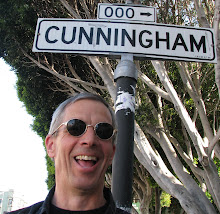I was invited to write about my creative process for a blog hop by my friend Judy Coates Perez. Judy makes some of the most beautiful images I have ever seen on quilts. Check out her cool work at http://www.judycoatesperez.com/
We all have challenges in our quiltmaking practices. My biggest challenge is trying to focus on what a quilt will look like. The problem is, what it looks like is not my primary concern when I start out on a new quilt project. My primary concern is what I am doing, or what I am trying to do. Here is what I mean.
I am starting on a new quilt project, one of a series I have returned to again and again over the last 35 years. My idea has been to ask myself what it would look like if I rethought or redesigned classic quilt patterns. This one is my new version of Bethlehem Star. In the very first batch of antique quilts I ever saw there was an early Bethlehem Star made of printed chintz fabrics from about 1830 or so. It had cutout corners at the bottom to fit around the posts of a four-poster bed. The star was the common design made of diamonds, sometimes called Lone Star, with eight large points made of many small diamond shaped patches.
Since then I have seen thousands of similar stars, from the solid fabric stars of the Amish and the Sioux to the scrappy stars of Alabama and on through the pastel stars of the 1930's. Yesterday, I decided to make my own large star pattern, but to do it with my favorite medium: bias tape. From the beginning of my project, then, it was something I was going to do, even though I had no idea how I was going to proceed or what it was going to look like.
My next step was to select fabric to start my creative juices flowing. I pulled out some Yukata cottons with space themed prints and tossed them on the floor. Then I found some pure white I had washed and ironed for another--untouched--idea, and tossed that down beside the yukata cloth. Hmmm. I rummaged around and found a wild orange and green print off some clearance shelf somewhere and tried it with what I already had. Nothing yet. Then, underneath a plastic bag of felted wool sweaters and a chunk of black batting, I found yards and yards of a hand dyed lightweight cotton with a brown background and little black "cracks" with pink smudges here and there. Since I am planning to quilt this by hand, the light weight appealed to me. And the little cracks in the universe got me thinking along a whole new line. I folded up everything else and filed it away.
From my drawers and drawers full of bias tape I pulled half a dozen colors and laid them across the brown cotton. I liked the way the brown reminded me of the original chintz Bethlehem Star I was keeping in mind while I worked. But none of the colors of the bias tape were sparking anything else. Then I saw a spool of 1/2" white I had bought on eBay once for $2.57. 100 yards of white bias tape--enough for about 34 Chanel suits! It gave me plenty of contrast against the brown. Perfect.
Now, onto the star. I had no idea how to proceed. Should I make large spikes? Overlapping circles? Spoke-like straight lines? Then I thought of the pictures I had seen of actual stars themselves, and thought about how they looked almost like fluid...and then I saw in my mind that I could use short pieces of bias sewn down at random but clumped together into a roughly circular, gigantic star on the space-like brown.
"I wonder what that would look like?" I asked out loud, and then I started sewing. The photo above is where I stopped for the day after a few hours of sewing. I imagine it will take a few full days before I have enough white lines to know if I am getting done.
That is how I work. I find out what something is going to look like by making it. I know that many people prefer to know what it is going to look like before they start. But for me the gamble that I might not like what it looks like when I am all done is worth the gamble that I might love the surprising effects I cannot forsee when I start. Primarily, however, I am just excited to have a concept that makes me want to go to work. If I try make something beautiful, or something historic, or something that will be easy to teach, I find my mind wandering, and I end up feeling like my heart is just not in it.
I need the feeling of exploring unknown territory. That is what it looks like to me!
Joe Cunningham
12.3.2014






















